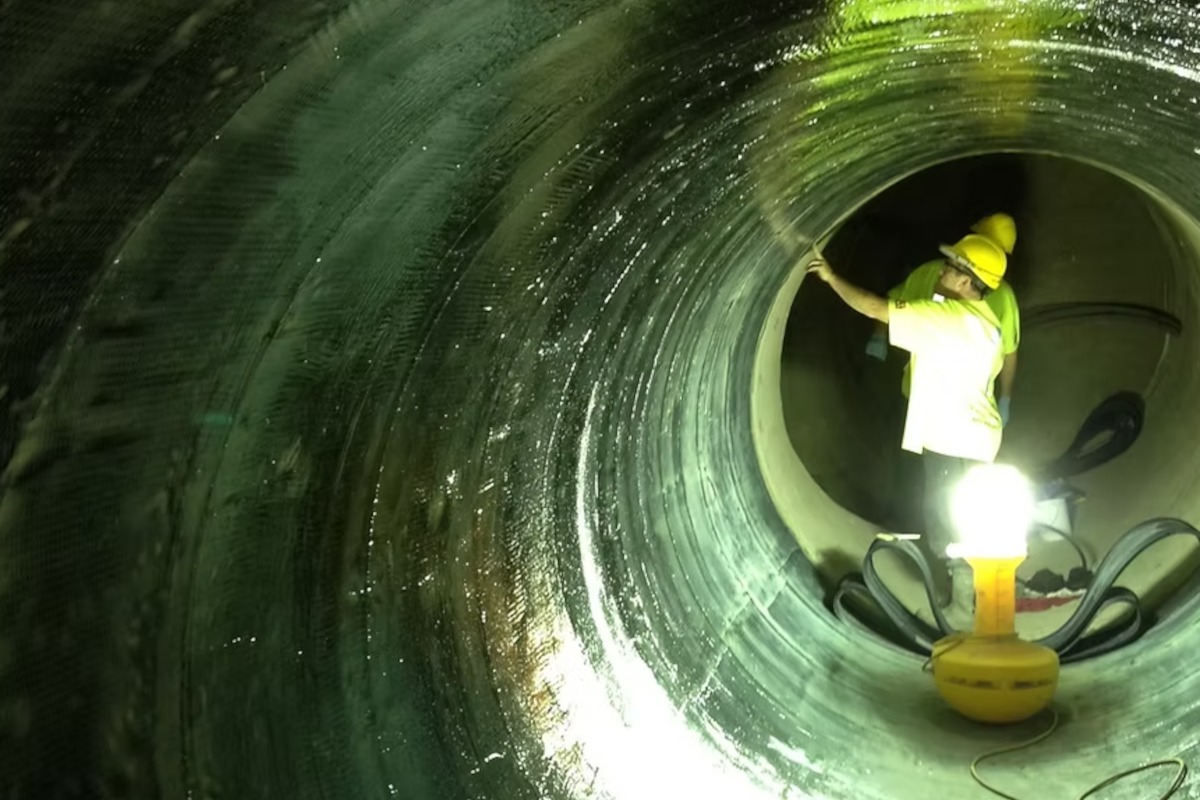
Installing Fiber Below Highway 407 in Ontario Via HDD
Highway 407 is a 94-mile long, heavily traveled tollway between the suburbs of Burlington and Clarington in the Greater Toronto Area in Ontario, Canada. A recently completed project involved installing communications fiber cables below the highway just east of the Leslie Street bridge.
The planned bore distance was about 680 ft, and the embankments on either side of the highway added to the topological complexities. The highway and median constituted about 265 ft of the bore, not including the on and exit ramps on either side.
In addition to the topology, crossing the busy roadway and maintaining proper depth below it, were the primary concerns. This was the challenge facing Azimuth Three Enterprises, a Canadian company specializing in telecommunications infrastructure construction.
Getting the Lay of the Land
The bore needed to be at least 15 ft deep at the freeway’s shoulders, and the plan called for drilling from the north side to the south, east of the Leslie Street bridge. Due to the embankment and the 15 ft depth requirement, it became clear that a bore plan would be required to adequately prepare for the pilot bore.
A TeraTrak R1 was used to map the terrain and plan the bore. Although the planned bore was about 650 ft, they mapped about 770 ft of terrain to allow for any potential changes in entry or exit locations. That extra distance did not end up being needed. Mapping the terrain and adding the five utilities being crossed only took Dan Bilodeau, drilling supervisor for Azimuth Three Enterprises, and Tyler Skrinek, product support representative for Vermeer Canada, 20 minutes to complete.
In using a TeraTrak, the highway itself could not be mapped so its width was entered using the Obstruction feature. Bilodeau was impressed with how quick and easy the mapping and planning was.
After mapping the terrain, the embankment on the entry side had an elevation difference of 36.5 ft from entry to the southside shoulder of 407. This was more than 232 ft, so the average slope of the embankment was about 16 percent. On the exit side, the hill was much more gradual, with an elevation difference from the shoulder to the exit pit of a little over 8 ft. Dan now had all the information required to create a rod-by-rod plan.
The Plan
The contractor had elected to use their Ditch Witch JT 28 and Falcon F5 locating system for this crossing. The ground conditions were expected to consist mainly of glacial till with some cobble. They were concerned about their ability to steer in those ground conditions, so they opted for a somewhat conservative maximum bend of 4 percent per rod for the plan. This would allow the crew some steering margin during the bore.
According to the plan created by the R1 app, the pilot bore would start out with a relatively steep downward pitch going down the embankment. As it got within 90 or so feet of the highway, it started leveling out and ending up at a depth of 20 ft at the shoulder. It then maintained a near level pitch below the highway, exiting the other shoulder at a depth of 16.5 ft. From there a climb up the other embankment to the exit pit ending at a depth of 4 ft. Using the Aurora remote integration, the rig operator would have access to the rod-by-rod plan as well as the progress of the bore in the LWD Live application.
Crossing the 407
No work was allowed to take place on the roadway until after 10 p.m., which meant a night bore. The crossing took place on May 19, 2024, and after spending the day getting the site set up, the drill head entered the ground early in the evening, a little after 7:30 p.m. Drilling progressed well and steering was less affected than anticipated until some hardpan about 90 ft before the highway. The deviation from the plan was very evident on the Aurora remote and having the plan to refer to made corrective actions much simpler.
The drill head reached the northern shoulder of 407 just before 10:30 p.m. at the planned depth of 20 ft. By using target steering, the Falcon F5 receiver was placed out in front of the drill head, and referencing the plan, the crew could set the receiver in the median and drill towards it. Once the median was reached, the crew as able to verify that the bore was proceeding as planned. The receiver was then moved onto the south shoulder, and target steering was again used to cross the eastbound lanes.
The original traffic management plan called for shutting down some lanes to locate the drill head, but using Target Steering made that unnecessary. The pilot reached the other shoulder at one in the morning at a depth of 17.5 ft, a foot deeper than planned but meeting the 15-ft minimum requirement.
Drilling into the exit pit took about an hour, and the drill head entered the pit a couple of inches shy of the planned 4 ft depth. Bilodeau credits having a plan “which removes all the guesswork” for so accurately hitting the exit.
Given the working hours limitations, they had to wait until the following night to pull back the 4-in. HDPE conduit, which ultimately housed seven smaller ducts for the fiber. The pre-ream and pullback went smoothly and were completed in eight hours.
“When drilling under highways or creeks you want to do every thing you can to minimize risk to ensure success. All the information we got from the R1 plan built towards that success,” said Bilodeau, already working on the next challenge.
Joshua Spray is territory manager at Digital Control Inc. (DCI). Siggi Finnsson is senior product manager at DCI.






